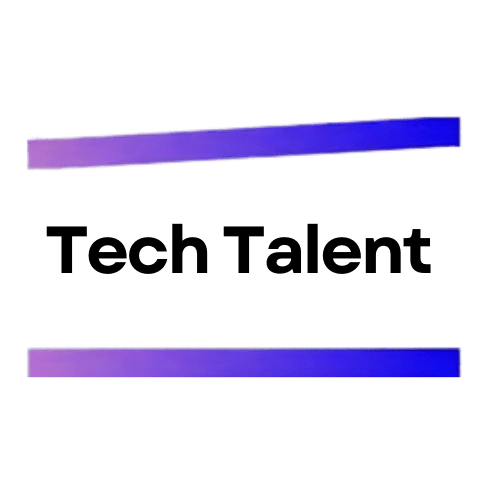As artificial intelligence continues to reshape industries, companies are faced with the challenge of determining the most effective approach to harness its power. This article delves into the complexities of building an AI team, exploring the potential benefits and pitfalls that organizations must consider.
The decision to invest in AI capabilities is not one to be taken lightly. It requires careful consideration of various factors, including budget constraints, existing technological infrastructure, and long-term strategic goals. For many companies, the allure of cutting-edge AI solutions is tempered by the reality of limited resources and the need for immediate return on investment. As we navigate this complex terrain, it’s essential to understand the different approaches to AI implementation and how they align with your organization’s unique needs.
Understanding AI Archetypes: Takers, Shapers, and Makers
To make an informed decision about building an AI team, it’s crucial to understand the three primary archetypes of AI model consumption: Takers, Shapers, and Makers. Each archetype represents a different level of engagement with AI technology and requires varying degrees of investment and expertise.
Takers are organizations that utilize publicly available, commercialized AI solutions such as ChatGPT, Microsoft 365 Copilot, or Google’s Bard. This approach requires minimal investment in terms of personnel and infrastructure but may come with limitations in terms of customization and data security.
Shapers take existing AI models and connect them to their proprietary data sources. This approach allows for more tailored solutions, such as creating a support chatbot by connecting Azure AI bot service to internal support wikis. Shapers require a higher level of technical expertise and investment but can achieve more specialized results.
Makers are at the forefront of AI development, building foundational models for others to use and train. This category includes tech giants like OpenAI, Google, and Amazon. For most organizations, becoming a Maker is not a realistic or necessary goal.
The Shaper’s Dilemma: Balancing Investment and Return
For many businesses, the Shaper archetype presents the most attractive balance between customization and resource investment. However, this approach comes with its own set of challenges and considerations. Shaping AI solutions requires a deep understanding of both the technology and the specific business needs it aims to address.
One of the primary concerns for Shapers is ensuring a return on investment (ROI). Implementing AI solutions can be costly, both in terms of financial resources and human capital. To justify these expenses, organizations must carefully evaluate potential use cases and their impact on business operations. This evaluation should include:
- Customer Care Enhancement: AI-powered chatbots can significantly reduce call volumes and improve response times, potentially deferring headcount costs as the business grows.
- Research and Regulatory Compliance: AI can streamline the process of gathering and analyzing data from various sources, freeing up human researchers to focus on higher-value tasks.
- Sales and Marketing Optimization: AI tools can provide deeper insights into customer segmentation, campaign targeting, and account planning, potentially boosting revenue and efficiency.
By carefully assessing these use cases and conducting pilot programs, organizations can make data-driven decisions about their AI investments and build a compelling business case for further development.
Piloting Your AI Initiative: A Strategic Approach
Before committing to building a full-fledged AI team, it’s wise to start with a pilot program. This approach allows organizations to test the waters, validate use cases, and assess the potential impact of AI solutions without overcommitting resources. A well-structured pilot program should include the following elements:
- Cross-functional Team Assembly: Bring together high-performing employees, subject matter experts, and external consultants to create a diverse and skilled pilot team.
- Clear Objectives and Metrics: Define specific goals for the pilot and establish key performance indicators (KPIs) to measure success.
- Flexible Infrastructure: Utilize cloud-based solutions for hosting and deployment to maintain agility and minimize upfront costs.
- Iterative Development: Implement a rapid prototyping and testing cycle to quickly identify and address challenges.
- Stakeholder Engagement: Keep key decision-makers informed and involved throughout the pilot process to ensure alignment with broader organizational goals.
By following this strategic approach, organizations can gain valuable insights into the potential of AI while minimizing risk and maximizing learning opportunities.
Scaling Up: From Pilot to Full-Scale AI Team
If the pilot program proves successful, organizations may find themselves at a critical juncture: the decision to scale up and build a dedicated AI team. This transition requires careful planning and consideration of several key factors:
- Talent Acquisition and Development: Identify the specific skills needed for your AI initiatives and develop a strategy for attracting and retaining top talent.
- Infrastructure Investment: Assess the need for additional computing resources, data storage, and specialized hardware to support expanded AI operations.
- Data Governance and Ethics: Establish robust frameworks for data management, privacy protection, and ethical AI use to ensure compliance and maintain trust.
- Integration with Existing Systems: Plan for seamless integration of AI solutions with current business processes and legacy systems.
- Continuous Learning and Adaptation: Foster a culture of ongoing education and experimentation to stay at the forefront of AI advancements.
By addressing these considerations, organizations can build a strong foundation for long-term success in AI implementation and innovation.
The Future of AI in Business: Embracing the Opportunity
AI’s growing influence in business operations is undeniable. Across industries, its role is becoming more central. Establishing an in-house AI team goes beyond following trends; it’s crucial for long-term success in today’s dynamic business environment. This decision ensures your organization is well-prepared for future challenges and opportunities alike.
While the path to building an effective AI team may be challenging, the potential rewards are substantial. Organizations that successfully integrate AI into their operations can expect to see improvements in efficiency, decision-making, customer satisfaction, and innovation. However, it’s crucial to approach this journey with a clear strategy, realistic expectations, and a commitment to continuous learning and adaptation.
As you consider your organization’s AI strategy, remember that there is no one-size-fits-all solution. The key is to align your approach with your specific business goals, resources, and culture. Whether you choose to be a Taker, or Shaper, or even aspire to become a Maker, the most important step is to begin your AI journey with purpose and vision.

Explore TechTalent: Elevate Your Tech Career
Ready to take your interactive walkthrough skills to the next level?
TechTalent offers opportunities to certify your skills, connect with global tech professionals, and explore interactive design and development.
Join today and be part of shaping the future of interactive walkthroughs!
